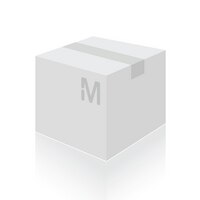SCC126 Sigma-AldrichSF7761 Human DIPG H3.3-K27M Cell Line
SF7761 pediatric diffuse intrinsic pontine glioma (DIPG) cell line harbors the histone H3.3 Lys 27-to-methionine (K27M) mutation and can support research and drug development efforts targeting DIPG.
More>> SF7761 pediatric diffuse intrinsic pontine glioma (DIPG) cell line harbors the histone H3.3 Lys 27-to-methionine (K27M) mutation and can support research and drug development efforts targeting DIPG. Less<<SF7761 Human DIPG H3.3-K27M Cell Line MSDS (material safety data sheet) or SDS, CoA and CoQ, dossiers, brochures and other available documents.
Recommended Products
概述
| Replacement Information |
|---|
重要规格表
| Key Applications |
|---|
| CULT |
| References |
|---|
| Product Information | |
|---|---|
| Quality Level | MQ100 |
| Biological Information | |
|---|---|
| Cell Line Type |
|
| Physicochemical Information |
|---|
| Dimensions |
|---|
| Materials Information |
|---|
| Toxicological Information |
|---|
| Safety Information according to GHS |
|---|
| Safety Information |
|---|
| Product Usage Statements | |
|---|---|
| Quality Assurance | • Each vial contains ≥ 200 viable neurospheres. • Cells are tested negative for HPV-16, HPV-18, Hepatitis A, C, Herpesvirus type 6, 7, 8 and HIV-1 & 2 viruses by PCR. • Cells are negative for mycoplasma contamination. • Each lot of cells is genotyped by STR analysis to verify the unique identity of the cell line. |
| Usage Statement |
|
| Packaging Information | |
|---|---|
| Material Size | ≥ 200 neurospheres/vial |
| Transport Information |
|---|
| Supplemental Information |
|---|
| Specifications |
|---|
| Global Trade Item Number | |
|---|---|
| 产品目录编号 | GTIN |
| SCC126 | 04054839354779 |
Documentation
SF7761 Human DIPG H3.3-K27M Cell Line MSDS
| 职位 |
|---|
数据表
| 标题 |
|---|
| Data Sheet-SCC126 |
| SF7761 Human DIPG H3.3-K27M N Cell Line |






